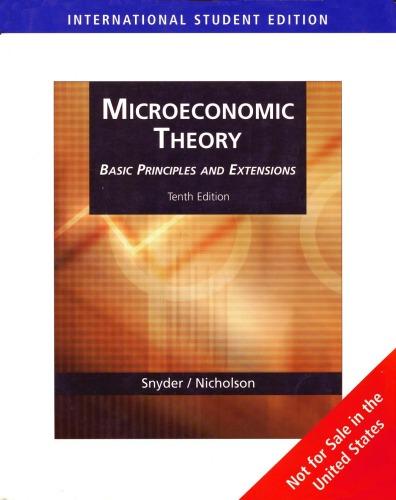17.4 As in Example 17.3, suppose trees are produced by applying 1 unit of labor at time...
Question:
17.4 As in Example 17.3, suppose trees are produced by applying 1 unit of labor at time 0. The value of the wood contained in a tree is given at any time t by f(t). If the market wage rate is wand the real interest rate is r, what is the PDV of this production process, and how should r be chosen to maximize this PDV?
a. If the optimal value of t is denoted by r*, show that the "no pure profit" condition of perfect competition will necessitate that w="f(t"). Can you explain the meaning of this expression?
b. A tree sold before * will not be cut down immediately. Rather, it still will make sense for the new owner to let the tree continue to mature until r*. Show that the price of a u-year-old tree will be me and that this price will exceed the value of the wood in the tree [f(#)] for every value of u except ut* (when these two values are equal).
c. Suppose a landowner has a "balanced" woodlot with one tree of "each" age from 0 to r*. What is the value of this woodlot? Hint: It is the sum of the values of all trees in the lot.
d. If the value of the woodlot is V, show that the instantaneous interest on V (that is, r. V) is equal to the "profits" earned at each instant by the landowner, where by profits we mean the difference between the revenue obtained from selling a fully matured tree [f(*)] and the cost of planting a new one (w). This result shows there is no pure profit in borrowing to buy a woodlot, because one would have to pay in interest at each instant exactly what would be earned from cutting a fully matured tree.
Step by Step Answer:

Microeconomic Theory Basic Principles And Extensions
ISBN: 9780324585377
10th Edition
Authors: Walter Nicholson, Christopher M. Snyder






